Higher classification Rhyticeros | Phylum Chordata Family Bucerotidae Scientific name Rhyticeros plicatus Rank Species | |
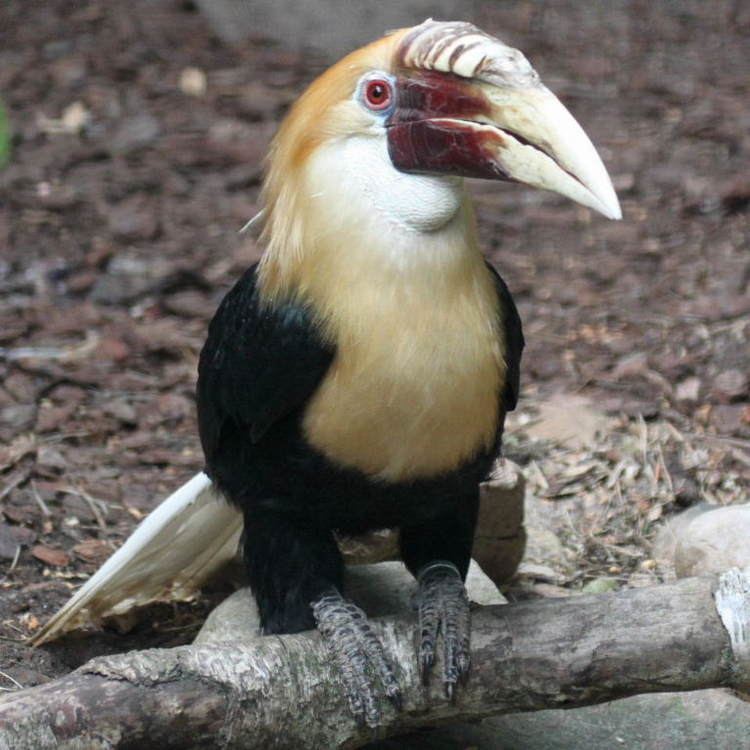 | ||
Similar Bird, Hornbill, Rhyticeros, Wreathed hornbill, Plain‑pouched hornbill | ||
Tufi resort papua new guinea bird watching blyth s hornbills
Blyth's hornbill (Rhyticeros plicatus), also known as the Papuan hornbill, is a large hornbill inhabiting the forest canopy in Wallacea and Melanesia. Its local name in Tok Pisin is kokomo.
Contents
- Tufi resort papua new guinea bird watching blyth s hornbills
- Description
- Subspecies
- Distribution and ecology
- Status and relationship with humans
- References
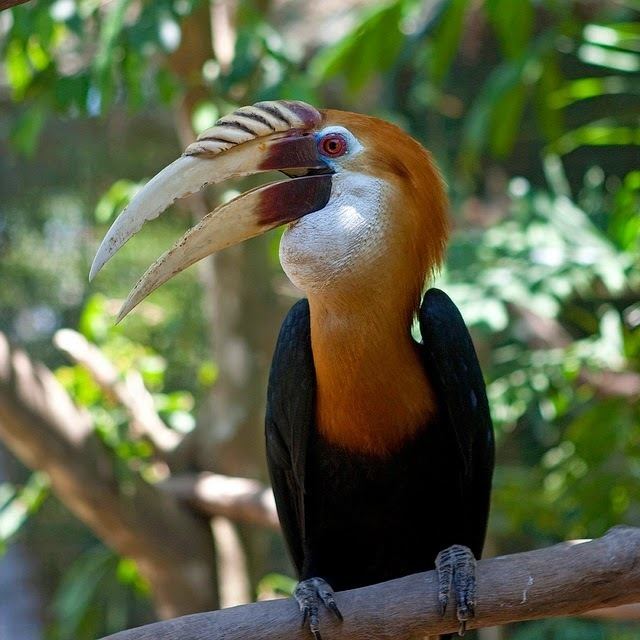
Previously, this hornbill was placed in the genus Aceros. It has often been lumped with the plain-pouched hornbill (R. subruficollis), and sometimes considered to include the Narcondam hornbill (R. narcondami) and the wreathed hornbill (R. undulatus) as subspecies.

The common name commemorates Edward Blyth (1810–1873), English zoologist and Curator of the Museum of the Asiatic Society of Bengal.
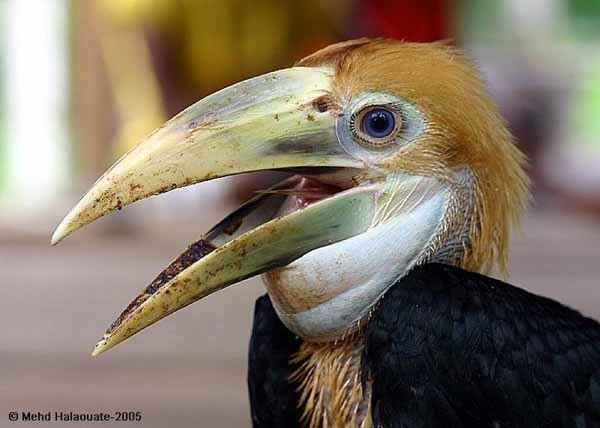
Description

Up to 91 cm (36 in) in length, the adult male has mainly black plumage with a golden or orange-buff head, white throat and a white tail. Its irises are reddish brown, and the eye is surrounded by naked pale blue skin. The female is a smaller, mainly black bird with a white throat and tail. Both sexes have a very large horn-coloured bill and casque. Young birds of both sexes resemble the male. Adults have up to eight folds on the pale casque, depending on age, while young birds have none.
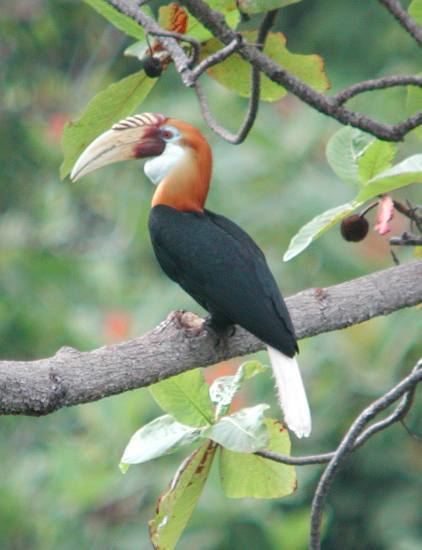
In flight the sound of its wings is loud and distinctive, a rushing noise that has been compared to the sound of steam escaping from a steam locomotive. It has a range of far-reaching, guttural grunting and laughing calls.
Subspecies
Various subspecies have been described across its range:
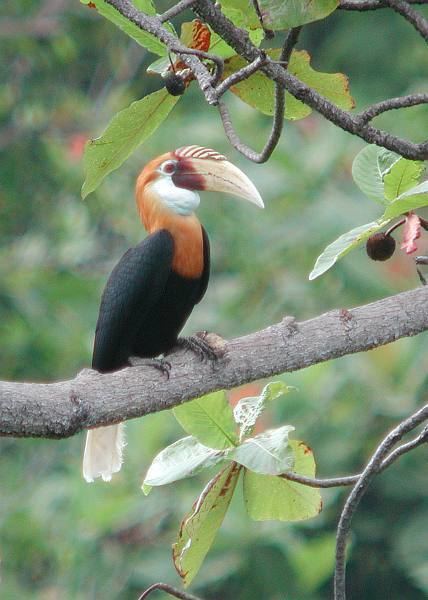
Distribution and ecology
The Papuan hornbill occurs throughout lowland forests, from sea level up to 1,200–1,500 m ASL, in the Moluccas, New Guinea, the Bismarck Archipelago, and as far east as the Solomon Islands. It is the only hornbill species native to New Guinea, and one of the largest flying birds of the region.
Its diet consists mainly of fruits, especially figs, occasionally supplemented with insects and other small animals.
The Papuan hornbill nests in a large tree hollow in the rainforest, from at least 18 metres (59 ft) up to 30 m (98 ft) above the ground. The female is restricted to the nest cavity throughout the incubation and nestling period, being largely sealed inside by plastering up the entrance with a mixture of fruit pulp and rotten wood, leaving only a narrow aperture through which the male feeds her. The clutch size is about two eggs.
Status and relationship with humans
Still widespread throughout its large range, the Papuan hornbill is assessed as least concern on the IUCN Red List of Threatened Species. However, it is subject to hunting pressure by some tribal groups, who use its feathers in headdresses, its bill as a personal adornment, and the lower mandible as a spear point. As a consequence, it is becoming rarer in some areas of New Guinea. On the other hand, this species has withstood tens of millennia of human hunting pressure. So as long as sufficient habitat is preserved, it is unlikely that hunting alone will prove a significant threat.
